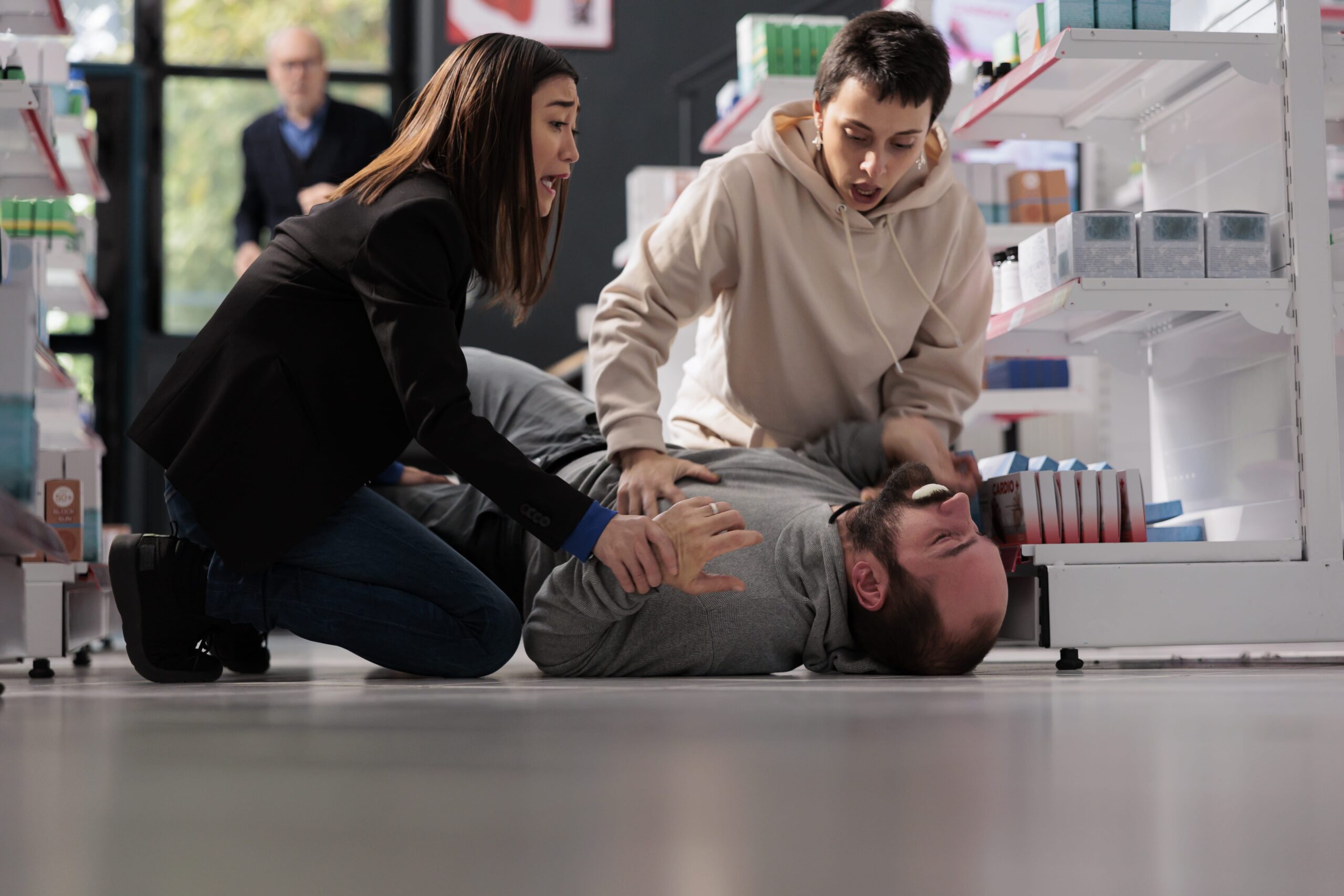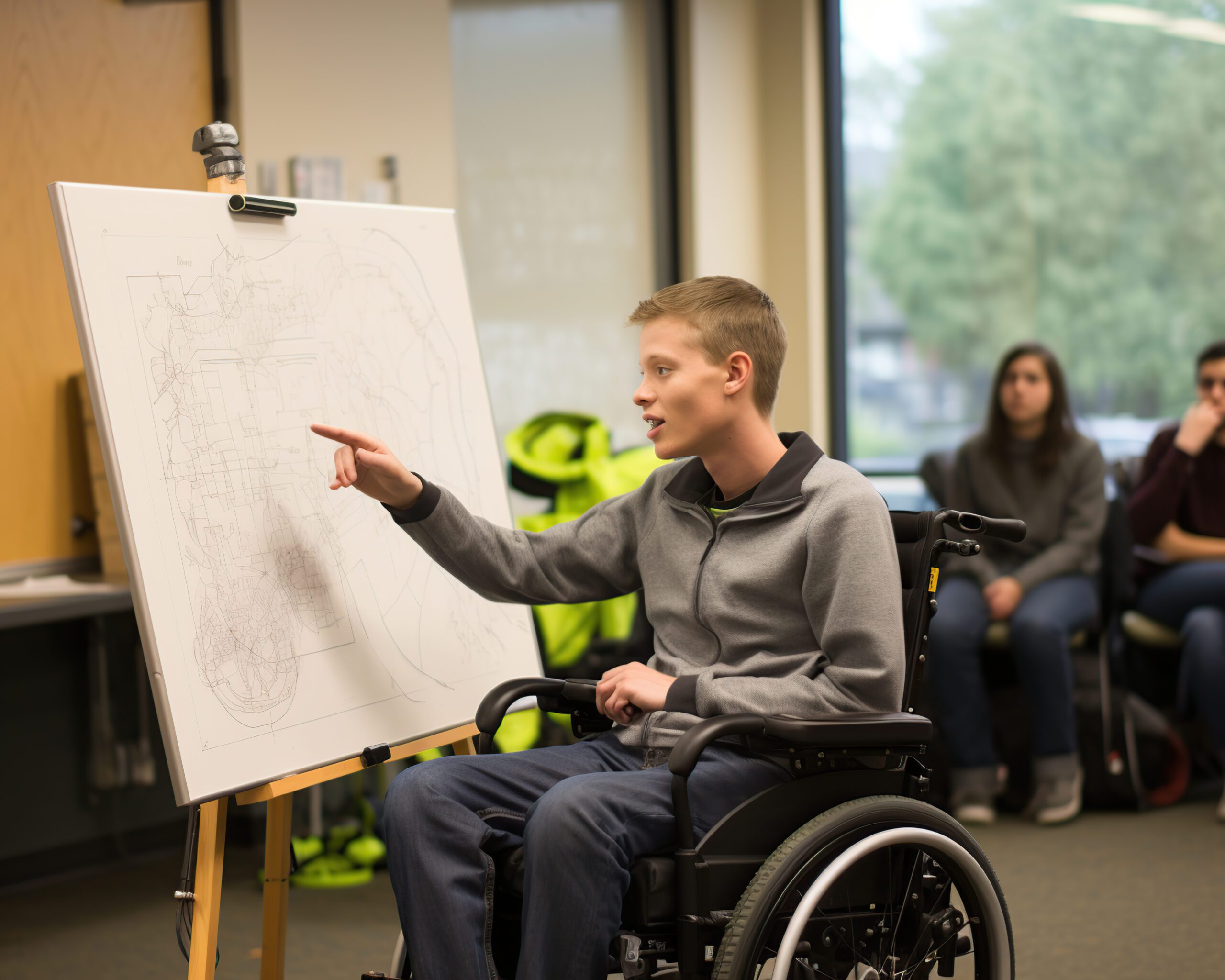Learning basic first aid techniques can help you deal with a medical emergency. You might be able to keep someone breathing, relieve their pain, or mitigate the effects of an injury or sudden illness until an ambulance arrives. For them, this could mean the difference between life and death.
Take a first aid course so you can recognise an emergency and provide basic first aid until professional help arrives.
Many terms and acronyms are used in the world of first aid to help us remember different treatments for specific injuries or illnesses. Most first aid terms and acronyms will be defined in this article, making it easier for you to save lives.
What is first aid?
First aid refers to the actions taken to assist an injured or sick person in the first few minutes following an illness or injury.
Accidents or illnesses can occur at any time, whether at home, work, or school. First aid can often help someone feel better, recover faster, and even save lives.
This first aid can often help someone feel better, recover faster, and even save lives.
From sprains to electric shocks to heart attacks, first aid can be useful in a variety of situations.
Why should you learn first aid?
You could one day save the life of a loved one, colleague, or stranger if you learn the fundamentals of first aid.
First aid could be as simple as positioning a person in the proper position to breathe freely. If they have stopped breathing, it may necessitate a more skilled intervention, such as cardiopulmonary resuscitation (CPR).
Some of the First Aid Medical Terms
Medical terminology can be intimidating. The good news is that they are frequently used in first-aid incidents and clinical settings, so more people are aware of them. You may hear these terms from a paramedic, a doctor, or even patients discussing their own illness or condition. They could also be found on records and monitoring cards.
Understanding the terms and acronyms used is the first step in effectively administering first-aid medication and treatment. They may be perplexing at first, but with practice and education, you will understand common first-aid concepts and be able to use these terms whenever the need arises.
Although knowing these terms is not required in everyday life, it is beneficial to know them in case something happens to you or someone you know. The following are some common first aid terms and acronyms, as well as their meanings.
Abrasion: Abrasion is a medical term that refers to skin damage caused by scraping or wearing away.
Acetaminophen: An analgesic pain reliever used to treat fever, arthritis, headaches, and minor pain.
Adrenaline: In response to stress, adrenaline increases the heart rate, pulse rate, and blood pressure and causes blood vessels to constrict and strengthen. An adrenaline rush is a surge of strength and energy caused by a stressful event or dangerous situation.
Airbag: A vehicle safety device that rapidly inflates during a collision to protect the occupant from colliding with objects that could cause injuries.
Anaphylaxis: A potentially fatal acute or severe allergic reaction to a chemical or allergen. Anaphylaxis First Aid should be administered in cases of potentially serious allergic reactions/anaphylaxis.
Anaesthetic: A substance that causes insensitivity to pain or a lack of feeling/awareness of pain, particularly during surgery and other painful procedures.
Angina: A medical term for chest pain or discomfort caused by decreased blood flow to the heart.
Antibiotics: Antibiotics are medications or drugs used to treat or prevent bacterial infections. This is also referred to as antibacterials. It should be noted that antibiotics have no effect on viral infections.
Artery: A blood vessel that transports oxygenated blood from the heart to all parts of the body. Arteries are a component of the circulatory system that transports nutrients and oxygen to all cells.
Aspirin: Aspirin is a medication used to treat mild to moderate pain. It is also used to reduce the risk of heart attacks and strokes by preventing the formation of blood clots.
Asthma: Asthma is a lung condition that causes difficulty breathing due to the constriction of the lungs’ small air tubes. It is usually caused by an allergic reaction or another type of hypersensitivity. To provide immediate care, there is First Aid for Asthma Attacks that can be practised.
AED (Automated External Defibrillator): A device that delivers a controlled electrical shock to the heart to restore normal rhythm. Because a sudden cardiac arrest can occur at any time, AEDs installed in workplaces are essential because it provides an opportunity for life-saving defibrillation.
Avulsion: A soft tissue injury characterised by the tearing away of a section of the skin or other soft tissue from deeper layers, resulting in severe bleeding.
Basic Life Support (BLS): This is a level of medical care provided to victims of life-threatening injuries until they receive full medical care at the hospital. A BLS-trained person, paramedic, or emergency medical technician can provide it.
Blood pressure: Blood pressure is the force exerted by the blood within the arteries. This is one of the vital signs being monitored to determine the overall health of the body. It varies depending on the activity, situation, and level of stress. Blood pressure that is too low or too high is not a good sign and will necessitate further medical attention. An adult’s normal blood pressure is around 120/80 mm Hg.
Blood glucose: Blood sugar is also referred to as blood glucose. Blood sugar abnormalities can be either high (hyperglycemia) or low (hypoglycemia) (hypoglycemia).
Breathing: Breathing is the process by which air is inhaled through the mouth or nose and then expelled from the lungs as a result of muscle contraction and relaxation.
Bruise: An impact injury that damages soft tissues and underlying blood vessels. Discolouration appears on the affected area of the body, another term for a contusion. When you get bruises, consult First Aid for Bruises for advice on how to treat and patch them up.
Burn: An injury that causes pain due to exposure to heat, flames, chemical agents, radiation, or electricity. Check out First Aid for Burns if you get caught or need to help someone who has burns.
Calamine: Calamine is an astringent made of zinc oxide or zinc carbonate that is commonly used in anti-pruritic lotion to treat rashes, poison ivy, insect bites, stings, or sunburns.
Carbon monoxide poisoning: A potentially fatal condition caused by inhaling too much carbon monoxide gas, which prevents oxygenation of the blood. Carbon monoxide is emitted by automobiles and engines, which should not be operated in poorly ventilated areas.
Cardiac: Cardiac is a medical term that means relating to the heart. A cardiac arrest is a sudden halt in effective blood circulation caused by the heart’s failure to contract. An AED and immediate CPR can help restore heart function.
000 – Triple Zero: Australia’s emergency ambulance number. For any medical emergency, serious accident, or crime, dial Triple Zero (000).
DRSABCD: DRSABCD is a mnemonic or acronym that is used in any life-threatening situation. It is an acronym that stands for Danger, Response, send (for assistance), Airway, Breathing, Circulation, and Defibrillation. When dealing with serious accidents, every first responder should remember this acronym. In the event of an emergency, follow the DRSABCD Action Plan.
Cardiopulmonary Resuscitation (CPR) (CPR): CPR, or cardiopulmonary resuscitation, is a life-saving technique that involves chest compressions and rescue breaths. During a cardiac arrest, chest compressions help blood circulation, and rescue breathing involves blowing air into the victim’s mouth to provide oxygen.
External Defibrillator (AED) (AED): A defibrillator, also known as an AED, is a portable device that delivers a controlled electric shock across the heart. The shock will attempt to reset the heart and get it to beat normally again.
Primary Research: The primary survey is a brief examination of the victim’s health, injuries, and conditions. It is carried out to detect and treat immediate life threats as well as to prevent further complications.
Position of Recuperation: The recovery position is an important part of first aid treatment. It is the position in which a conscious person is placed to ensure clear and open airways with no risk of choking from vomit or fluid.
SAMPLE: SAMPLE is an acronym or mnemonic that first responders use during secondary assessment. SAMPLE stands for Signs and Symptoms, Allergies, Medications, Past Medical History, and Events Leading Up to the Present Injury.
RICE: The RICE method is a self-care technique that is commonly used to treat sprains, strains, and dislocations. It aids in reducing swelling, relieving pain, and hastening to heal.
Mental Health First Aid (MHFA): Mental Health First Aid (MHFA) is a course or programme that teaches students how to respond effectively to signs of mental illness. It will give you the skills and knowledge you need to help someone who is suffering from poor mental health or is in a crisis.
Basic Life Support (BLS): Basic Life Support (BLS) is a level of medical care provided to victims of life-threatening injuries or illnesses until they are able to receive full medical care. It can be given by a trained first responder, paramedic, or emergency medical technician.
Where can I learn CPR and first aid?
You can enrol in a CPR or first aid course offered by a non-profit organisation such as St John Ambulance Australia (Victoria), the Australian Red Cross, or Life Saving Victoria in the state of Victoria. St John also runs community and school awareness programmes.
Learning CPR has no age restrictions. The only limitation to performing CPR is the person performing the procedure’s physical capabilities.
CPR is a module of the first aid course taught to Year 9 students in some schools. Everyone should learn CPR as a life skill. Remember that performing CPR in an emergency is preferable to doing nothing.
Unlock Your Future in Business and Healthcare Today!
Controlling infection while performing CPR
Everyone with resuscitation training should keep a resuscitation mask in their purse, wallet, or first aid kit to avoid contact with potentially infectious bodily fluids such as blood or saliva. This alleviates the fear of infection when assisting someone in a life-threatening situation. These masks are available from first-aid providers and pharmacies.
Medication or drug overdose first aid
Medication is highly unpredictable. Many medications and illegal drugs have dangerous side effects, especially when combined or combined with alcohol.
Do not leave someone to “sleep it off” if you know or suspect they have overdosed on drugs or medications. Any person who overdoses on any medication should be evaluated by a doctor or an ambulance paramedic.
If you are aware or suspect that someone you have found has overdosed on drugs or medications, call triple zero (000), as many overdoses result in death.
First aid kit
In addition to knowing some basic first aid techniques, it is critical that households and workplaces have a first aid kit that meets their needs, is well organised, fully stocked, and easily accessible at all times.
Depending on the setting, the contents should be appropriate for dealing with a variety of emergency situations. It’s a good idea to keep a variety of kits on hand in various locations, such as the home, car, or office.
First aid kits can be purchased from a variety of sources, such as St John Ambulance Australia (Victoria) or your local pharmacy. To meet specific requirements, speciality kits are also available.
First aid for a choking person
Maintaining a clear airway is always the priority to ensure that the person can continue to breathe. You may need to roll them onto their side, but a spinal injury is always a possibility in any accident victim. There are techniques for positioning an injured person on their side so that their spine moves as little as possible. A first aid training course can teach you these skills.




